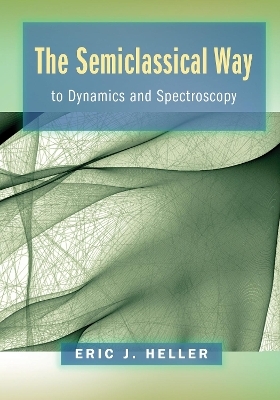
The Semiclassical Way to Dynamics and Spectroscopy
Seiten
2018
Princeton University Press (Verlag)
978-0-691-16373-4 (ISBN)
Princeton University Press (Verlag)
978-0-691-16373-4 (ISBN)
A graduate-level text that examines the semiclassical approach to quantum mechanicsPhysical systems have been traditionally described in terms of either classical or quantum mechanics. But in recent years, semiclassical methods have developed rapidly, providing deep physical insight and computational tools for quantum dynamics and spectroscopy.
A graduate-level text that examines the semiclassical approach to quantum mechanics
Physical systems have been traditionally described in terms of either classical or quantum mechanics. But in recent years, semiclassical methods have developed rapidly, providing deep physical insight and computational tools for quantum dynamics and spectroscopy. In this book, Eric Heller introduces and develops this subject, demonstrating its power with many examples.
In the first half of the book, Heller covers relevant aspects of classical mechanics, building from them the semiclassical way through the semiclassical limit of the Feynman path integral. The second half of the book applies this approach to various kinds of spectroscopy, such as molecular spectroscopy and electron imaging and quantum dynamical systems with an emphasis on tunneling. Adopting a distinctly time-dependent viewpoint, Heller argues for semiclassical theories from experimental and theoretical vantage points valuable to research in physics and chemistry. Featuring more than two hundred figures, the book provides a geometric, phase-space, and coordinate-space pathway to greater understanding.
Filled with practical examples and applications, The Semiclassical Way to Dynamics and Spectroscopy is a comprehensive presentation of the tools necessary to successfully delve into this unique area of quantum mechanics.
A comprehensive approach for using classical mechanics to do quantum mechanics
More than two hundred figures to assist intuition
Emphasis on semiclassical Green function and wave packet perspective, as well as tunneling and spectroscopy
Chapters include quantum mechanics of classically chaotic systems, quantum scarring, and other modern dynamical topics
A graduate-level text that examines the semiclassical approach to quantum mechanics
Physical systems have been traditionally described in terms of either classical or quantum mechanics. But in recent years, semiclassical methods have developed rapidly, providing deep physical insight and computational tools for quantum dynamics and spectroscopy. In this book, Eric Heller introduces and develops this subject, demonstrating its power with many examples.
In the first half of the book, Heller covers relevant aspects of classical mechanics, building from them the semiclassical way through the semiclassical limit of the Feynman path integral. The second half of the book applies this approach to various kinds of spectroscopy, such as molecular spectroscopy and electron imaging and quantum dynamical systems with an emphasis on tunneling. Adopting a distinctly time-dependent viewpoint, Heller argues for semiclassical theories from experimental and theoretical vantage points valuable to research in physics and chemistry. Featuring more than two hundred figures, the book provides a geometric, phase-space, and coordinate-space pathway to greater understanding.
Filled with practical examples and applications, The Semiclassical Way to Dynamics and Spectroscopy is a comprehensive presentation of the tools necessary to successfully delve into this unique area of quantum mechanics.
A comprehensive approach for using classical mechanics to do quantum mechanics
More than two hundred figures to assist intuition
Emphasis on semiclassical Green function and wave packet perspective, as well as tunneling and spectroscopy
Chapters include quantum mechanics of classically chaotic systems, quantum scarring, and other modern dynamical topics
Eric J. Heller is the Abbott and James Lawrence Professor of Chemistry and Professor of Physics at Harvard University and a member of the National Academy of Sciences. He is the author of Why You Hear What You Hear (Princeton).
| Erscheinungsdatum | 10.07.2018 |
|---|---|
| Zusatzinfo | 213 b/w illus. |
| Verlagsort | New Jersey |
| Sprache | englisch |
| Maße | 178 x 254 mm |
| Themenwelt | Naturwissenschaften ► Chemie ► Analytische Chemie |
| Naturwissenschaften ► Physik / Astronomie ► Mechanik | |
| Naturwissenschaften ► Physik / Astronomie ► Quantenphysik | |
| ISBN-10 | 0-691-16373-1 / 0691163731 |
| ISBN-13 | 978-0-691-16373-4 / 9780691163734 |
| Zustand | Neuware |
| Haben Sie eine Frage zum Produkt? |
Mehr entdecken
aus dem Bereich
aus dem Bereich


